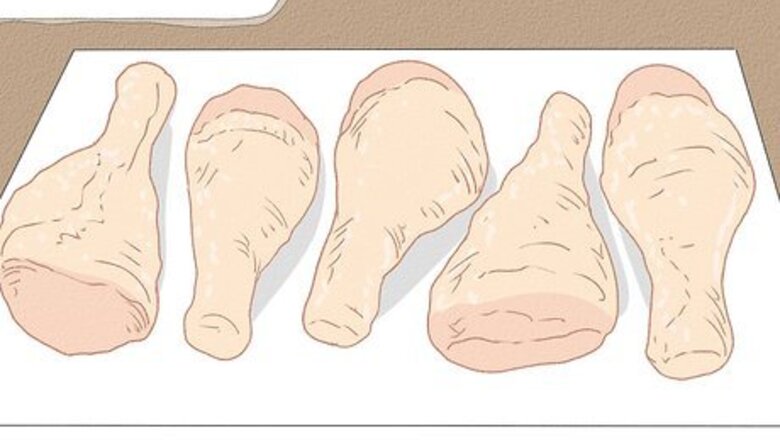
views
- Remove your chicken from its original packaging, place it in a microwavable dish, and defrost it at 30% power for 7 minutes per lb. (14 minutes per kg).
- Check if your chicken is fully defrosted by using a knife to cut into the thickest part of the meat. If there’s still ice, defrost for another 2 minutes and check again.
- Cook your chicken immediately after defrosting. Raw chicken carries bacteria and pathogens, so it’s safest to cook it right away to prevent foodborne illness.
- You can also defrost a chicken in cold water or in the fridge overnight. Avoid defrosting a whole chicken in the microwave since it may start to partially cook.
Defrosting Chicken in the Microwave
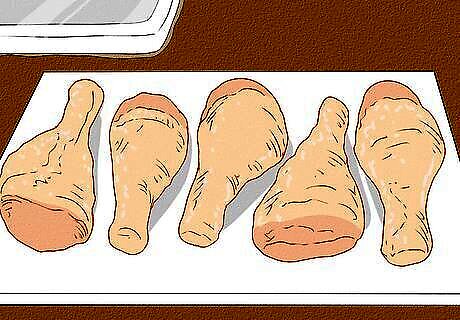
Remove your frozen chicken pieces from their original packaging. Remove the plastic wrap, styrofoam dish, and the absorbent pad that the chicken sits on. These materials may not be microwavable, so you don’t want them to melt or get damaged in your microwave. If you got your chicken directly from a butcher counter, remove the butcher’s paper or plastic that it’s wrapped in. Avoid defrosting whole chickens and legs in the microwave. The bones, skin, and other materials won’t defrost correctly, and the meat may taste rubbery when you cook it.
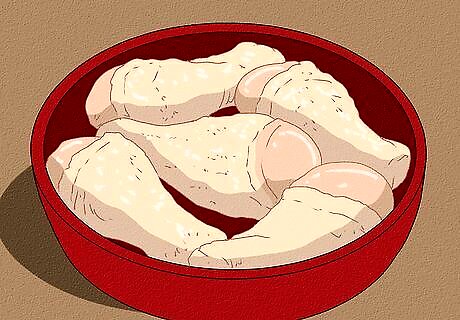
Place your chicken on a microwave-safe dish. Choose a microwave-safe plastic tub, bowl, or plate with high sides. The chicken may leak fluid as it thaws, so you’ll want those fluids to have somewhere to collect without spilling. Avoid putting your chicken directly onto the glass dish that comes with your microwave (or onto the bottom of your microwave, if it didn’t come with a dish). It’s best not to defrost your chicken on a paper plate or anything absorbent, since the chicken will leak fluid as it thaws.

Select the defrost button (or set your microwave to 30% power). Use the defrost button if your microwave has one. Otherwise, use 30% power. Either option will slowly heat your chicken without cooking it. If you use a higher power setting, the outer parts of your chicken might begin to cook before the inside is fully thawed. If your microwave has a dial for its power setting, turn the dial to roughly ¼ of the way above the lowest setting. This 30% power recommendation is based on a standard microwave, which uses about 800-1000 watts of power. If your microwave has a lower wattage than this, try a 40% or 50% power setting. Check the product label on your microwave (printed on the back, or on the inside of the door) to confirm its wattage.
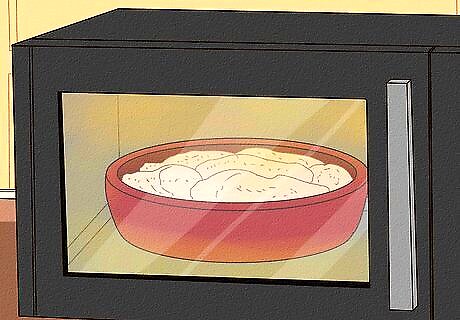
Microwave your chicken for 7 minutes per lb. (or 14 min per kg). For example, if you are defrosting 3 lbs. (1.5 kg) of chicken, you should defrost it for a total of 21 minutes. If your chicken is broken up into pieces, stop the microwave every 2 minutes and pull the frozen pieces apart. This helps them defrost more evenly.

Make a small cut to check that the inside of the chicken is defrosted. Use a sharp knife to cut into the thickest part of the chicken. If it’s fully defrosted, you should see no ice crystals in the middle. If you do see ice crystals, put your chicken back in the microwave for another 2 minutes. Then check again by using a knife to cut a different, thick part of the chicken. Repeat this process until the chicken is fully thawed. Be sure to set your microwave to “defrost” (or 30% power) each time. Cook your chicken immediately after defrosting it. There’s a high risk of bacteria and other foodborne illnesses in warm chicken, so it’s safest to prepare and cook it right away.
Can I defrost a whole chicken in the microwave?
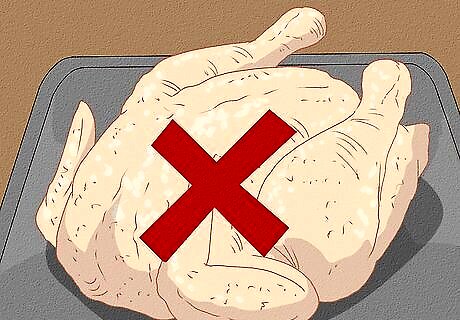
Defrosting a whole chicken in the microwave is not recommended. Since it takes a long time, there’s a much higher chance of bacteria growing as parts of the chicken slowly warm up. It’s also very hard to defrost a whole chicken in the microwave without cooking part of it, since there’s a large amount of meat, bones, and other materials that may defrost at different rates. Defrost whole chickens in the fridge over several nights. A whole chicken requires 5 hours per lb. (10 hours per kg) to fully defrost. You can also defrost whole chickens in cold water. A whole chicken requires 1 hour per lb. (2 hours per kg) to fully defrost.
Why do I need to cook the chicken after defrosting it?

There’s a high risk of bacteria in warm, defrosted chicken. These could cause foodborne illness. Instead of putting your defrosted chicken in the fridge or leaving it out, you should prepare and cook it right away. If you prefer to defrost chicken without cooking it right away, you can defrost it in the fridge. This will let is thaw while preventing it from getting too warm.
Can I refreeze chicken after defrosting it?
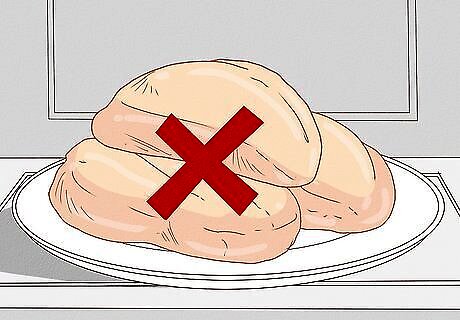
No, it’s unsafe to refreeze chicken that’s been thawed in the microwave. Since the thawed chicken will be warm, it will take a while to freeze again. This could give bacteria a chance to grow, which could cause foodborne illness when you thaw and cook it alter. Once your chicken is thawed in the microwave, you should cook it right away.
Other Thawing Methods

Defrost chicken in the fridge for 5 hours per lb. (10 hours per kg). Make sure the temperature is 40°F (4°C) or less, but still above freezing. The benefit of this method is that the chicken never gets too warm, which helps prevent foodborne illness. However, this method also takes the longest. Never thaw your chicken at room temperature due to the risk of bacteria. Always place the chicken in another pan or plate before putting it in the fridge, even if it’s already in a styrofoam container. This will prevent chicken juices from dripping in your fridge.
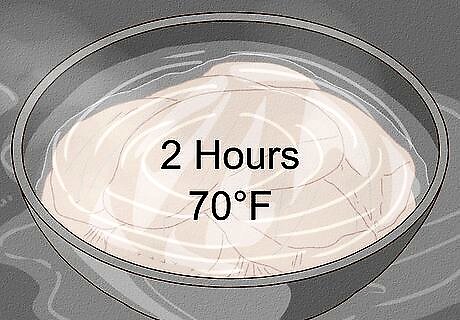
Defrost your chicken for 2 hours in water that’s 70°F (21°C) or colder. Make sure to keep the chicken in a leakproof food-grade plastic bag. Replace the water every 30 minutes to ensure that water doesn’t get too cold, since this could slow the thawing process. After 2 hours, use a knife to cut into the thickest part of the chicken. If there is still ice in the center, leave the chicken in cold water for another 30 minutes, then check again. Repeat this process until the chicken is fully thawed. Make sure your plastic bag is leakproof to prevent the chicken from getting watery. Use a large pot to hold the cold water while your chicken defrosts. Once you’re finished, clean the pot thoroughly with hot water and soap to prevent bacteria from growing.













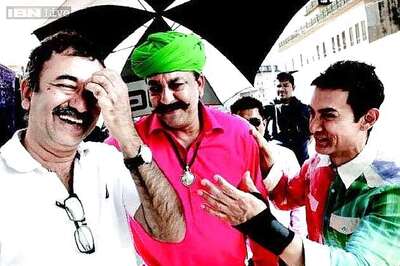

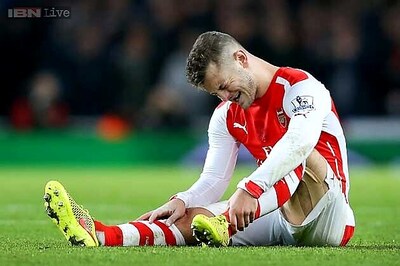




Comments
0 comment